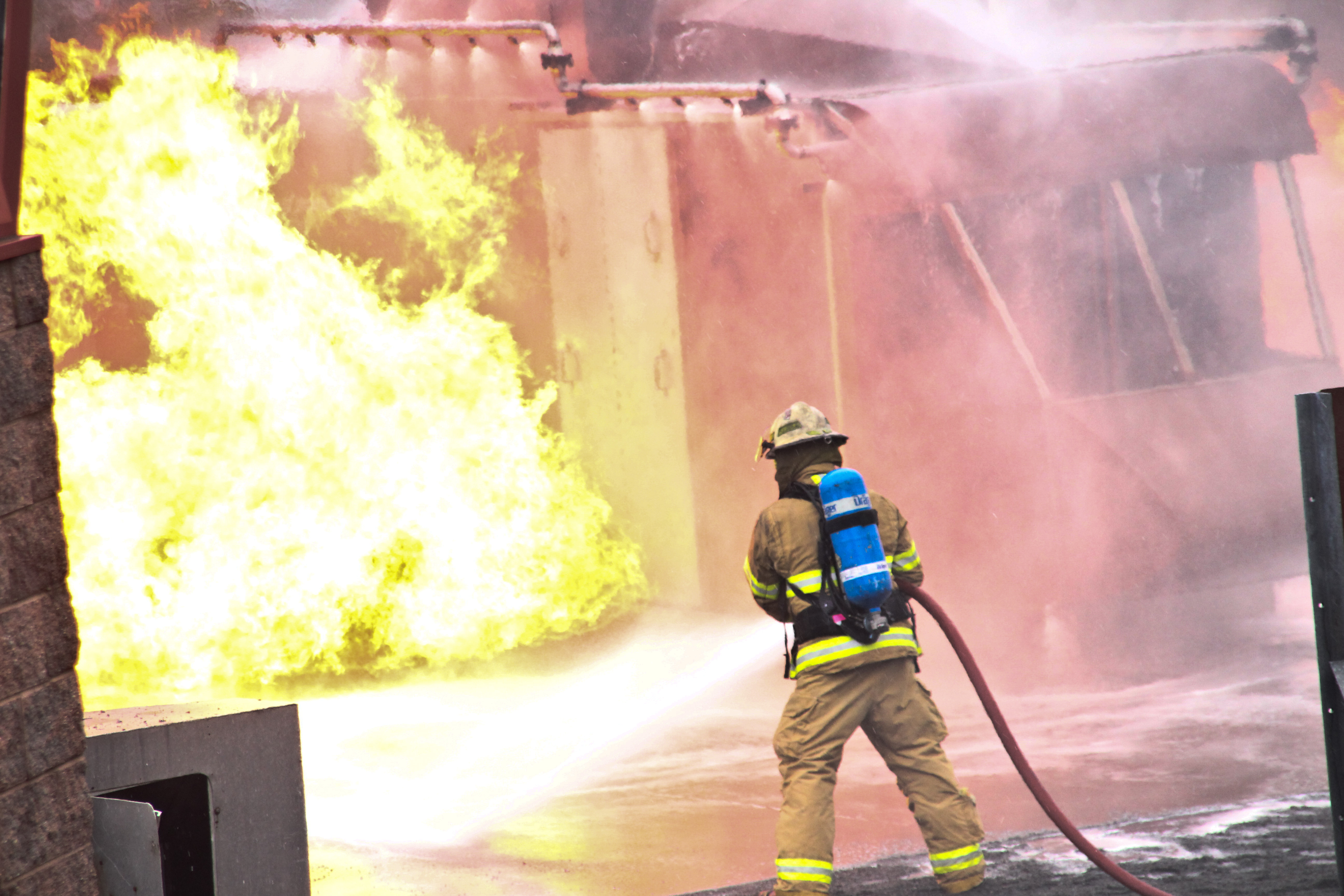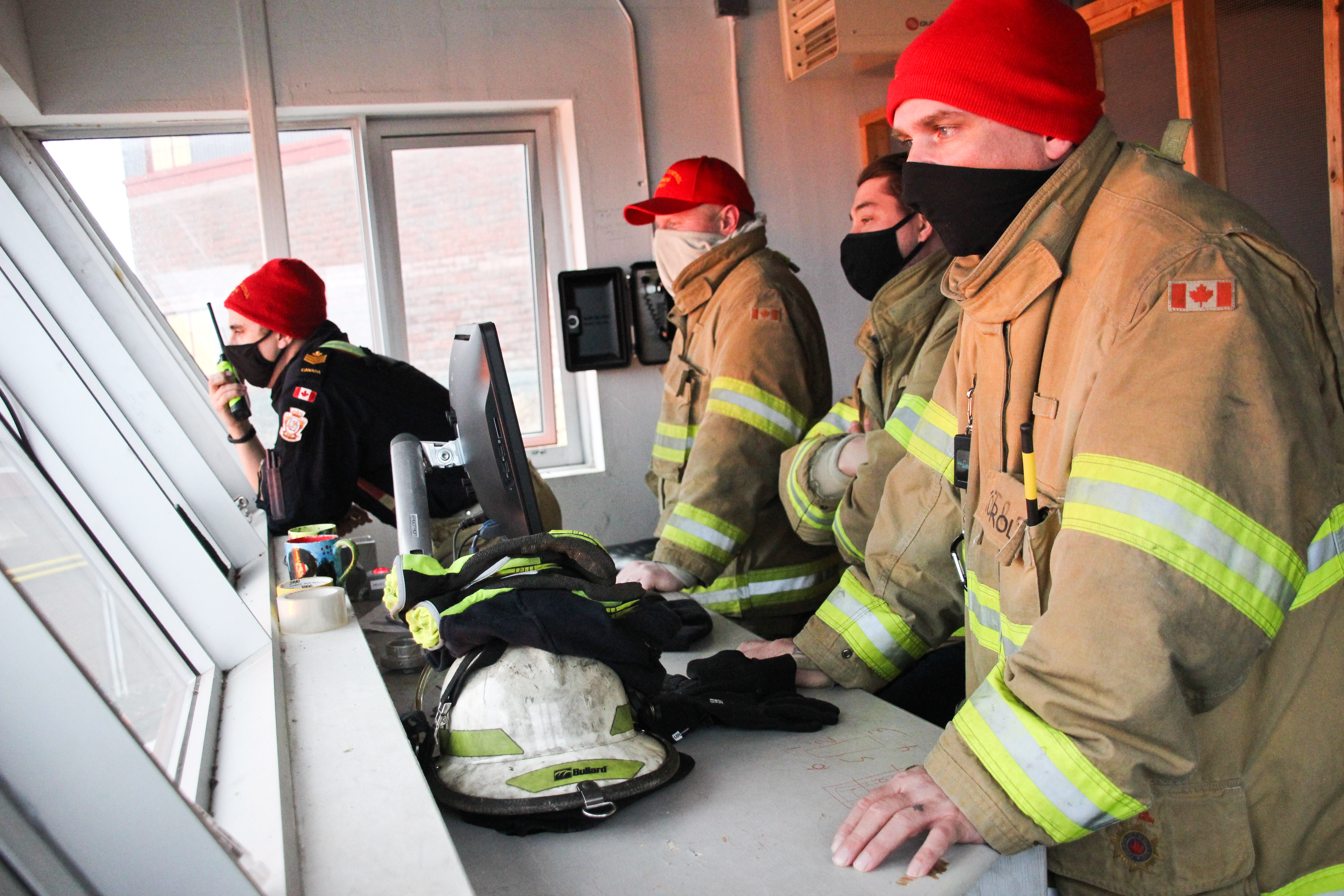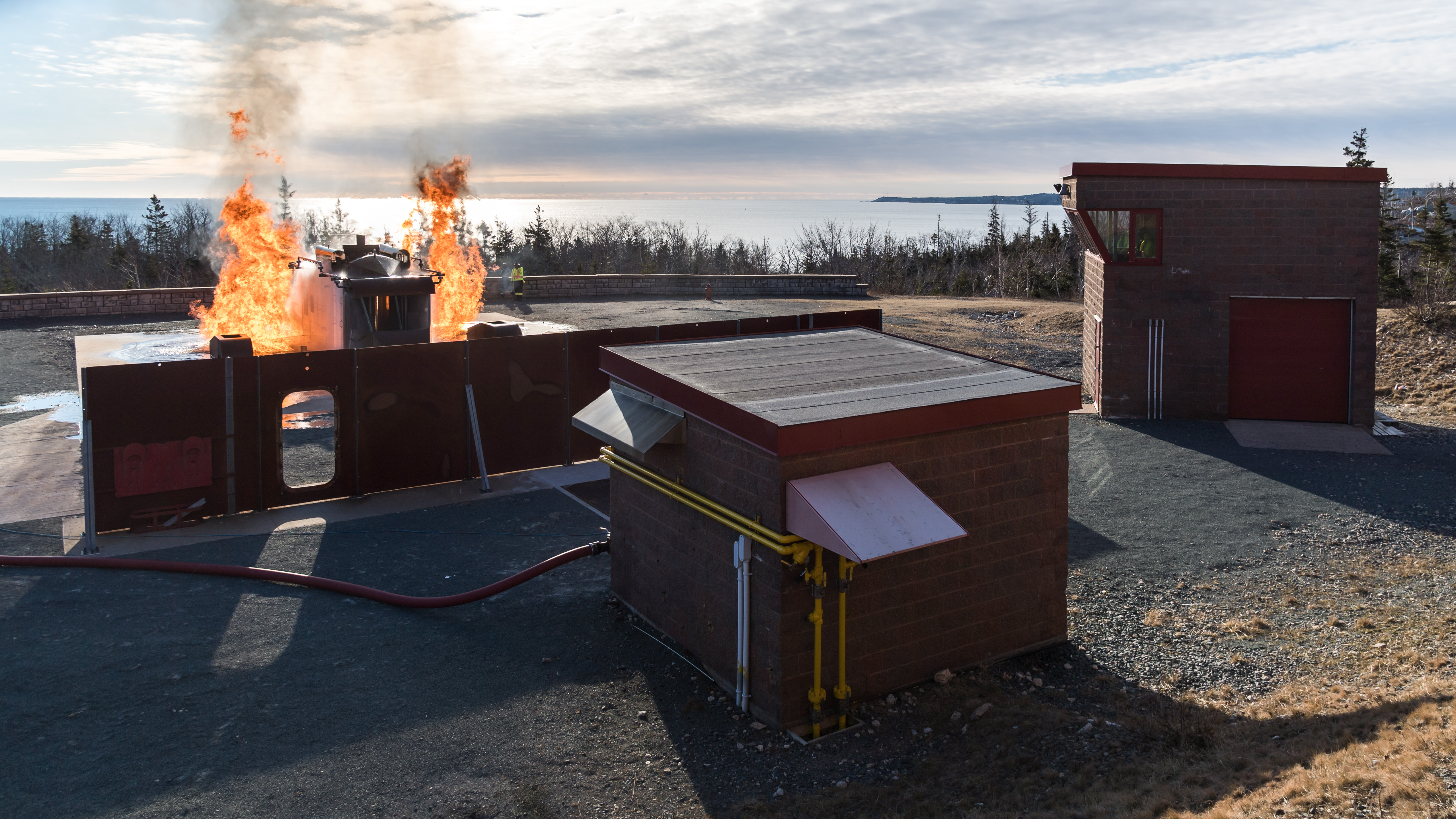
RYAN MELANSON, L'ÉQUIPE DU TRIDENT
New helicopter trainer ready for action at DCTF Kootenay
Par Joanie Veitch,
Équipe du trident

RYAN MELANSON, L'ÉQUIPE DU TRIDENT
After months of anticipation, control operators and instructors fired up the new helicopter trainer at the Naval Fleet School (Atlantic) Damage Control school in Purcell’s Cove on March 1, in preparation for an individual helicopter crash rescue training course to go live later this month — the first at the school since November 2019.
The new model is a huge improvement over the previous trainer, which was “rusted like an outdoor barbecue” after being heated and cooled during training exercises for nearly 20 years, says LCdr Andrew Cumming, the Damage Control Division Commanding Officer.
The new trainer, located outside the Division’s Damage Control Training Facility (DCTF) Kootenay, simulates the Navy’s CF-148 Cyclone, giving it new entry and exit points and different locations for potential fires than the previous helicopter frame — installed when DCTF Kootenay was built in 2002 and modelled on the CH-124 Sea King.
Design for the new trainer frame began in 2015, with DCTF managers on both the east and west coasts offering feedback on their experience with the original frame and providing location specific information, to account for things such as the colder weather conditions in Nova Scotia in the winter.
“The biggest change is the look and feel of the trainer to be a realistic rendition,” says LCdr Cumming. “In any fire, the sooner you can combat it the more likely that it won’t get out of control. You will lower the temperature to increase the survivability of anyone inside. That’s why this training is critical, so that teams advance as quickly and safely as possible to prevent loss of life.”

CPL DAVID VELDMAN, FORMATION IMAGING SERVICES
Along with different entry and exit points than the previous trainer, explains Lt(N) Daniel Chamberlain, acting Damage Control Training Officer, the new helicopter simulator is engineered to be more resistant to the effects of training and nature.
“Systems within the helicopter will extend its service life, like improved steel and a water system which ensures it doesn’t get as hot as the previous frame, preventing thermal expansion,” says Lt(N) Chamberlain.
The new helicopter trainer was built and installed in February 2020, with the propane, water, air and control systems put in over the following weeks. The plan was to have the new trainer operational by April 2020, “but COVID significantly delayed its completion,” says LCdr Cumming.
Prior to the shutdown period, managers at DCTF increased the training schedule, but since November 2019 only the west coast DC Division has run helicopter crash and rescue courses. On March 1, Damage Control Training Facility Galiano, in Victoria, BC went offline until their new helicopter trainer is installed, which is scheduled for sometime within the next fiscal year.
To simulate a helicopter emergency on board ship, control operators and instruction staff use propane burners to ignite a fire in any of six locations throughout the helicopter frame. Individual members of the Marine Technician and Boatswain trades, who act as both the ship’s helicopter crash rescue team and the advanced firefighting rapid attack unit, are the first responders if there is a fire on ship.
Training consists of class time, dry runs and practice before the simulated fire, as well as rescue exercises using the helicopter trainer. Up in the control tower, instruction staff work to create as realistic an environment as possible, calling out emergency information over a loudspeaker and watching computer screens to monitor the various fire locations as the flames begin to curl up and around the helicopter frame.
Advances in technology means new materials and compounds to assist the attack team as they respond to the emergency, LCdr Cumming explains, while improved monitoring systems and other technological innovations improve the overall communication and safety of the simulation.
“The control system for the helicopter is more robust to give operators better safety for students, but the experience is still largely hands on.”
There are 41 core instructor and management positions at DCTF Kootenay. Most have spent time in high-readiness or deployed ships and are members of working groups — both national and international — in their specific fields of expertise, to share ideas and lessons learned, says LCdr Cumming.
“There is never a ‘regular day at the office’ here, although during the maintenance periods…there is a chance to catch up and conduct what civilian teachers call planning time.”
In a regular — ‘non-pandemic’ — year, DCTF staff train about 6,500 sailors, putting them through drills of various hazards and emergencies that can happen at sea, with courses designed to correspond to the different classes of ships.
“Each one comes with its unique challenges,” says LCdr Cumming. “Staff are trained as experts, but most courses also have a few leaders in the student body who provide a lot of training value as well. It’s a team sport.”





